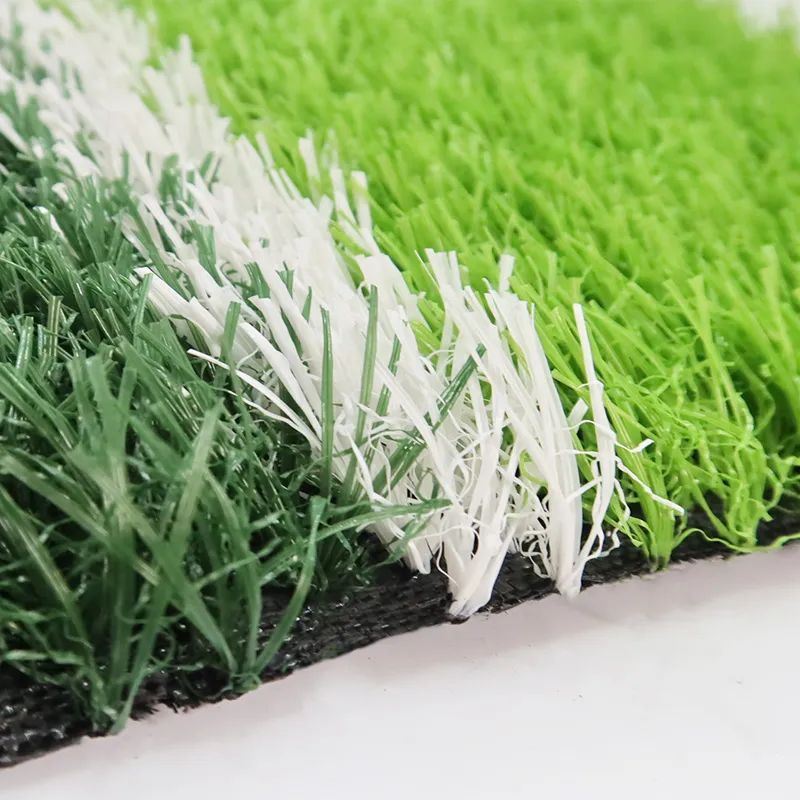
- Afrikaans
- Arabic
- Belarusian
- Bengali
- Czech
- Danish
- Dutch
- English
- Esperanto
- Estonian
- Finnish
- French
- German
- Greek
- Hindi
- Hungarian
- Icelandic
- Indonesian
- irish
- Italian
- Japanese
- kazakh
- Rwandese
- Korean
- Kyrgyz
- Lao
- Latin
- Latvian
- Malay
- Mongolian
- Myanmar
- Norwegian
- Persian
- Polish
- Portuguese
- Romanian
- Russian
- Serbian
- Spanish
- Swedish
- Tagalog
- Tajik
- Thai
- Turkish
- Turkmen
- Ukrainian
- Urdu
- Uighur
- Uzbek
- Vietnamese
artificial grass for sports field
Oct . 09, 2024 23:20 Back to list
The Rise of Artificial Grass for Sports Fields
In recent years, the demand for artificial grass in sports fields has surged, reflecting a broader trend towards synthetic materials in various industries. This shift has transformed the landscape of sports facilities, offering numerous benefits that traditional grass cannot provide. From durability and low maintenance to consistent playing conditions, artificial grass is becoming the preferred choice for athletic fields worldwide.
Durability and Longevity
One of the primary advantages of artificial grass is its unparalleled durability. Unlike natural grass, which can become worn and damaged from heavy use, synthetic turf can withstand high levels of foot traffic without losing its quality. This durability ensures that sports fields remain in top condition throughout the season, reducing the need for constant repairs and replacements.
In addition, artificial grass is not subject to weather-related damage. Heavy rainfall, extreme heat, or frost can severely affect natural grass, often leading to muddy and unusable fields. In contrast, synthetic turf drains well and maintains its integrity regardless of environmental conditions, allowing athletes to train and compete without interruption. This resilience contributes to the field's longevity, making it a cost-effective investment for sports organizations.
Low Maintenance Requirements
Another significant benefit of artificial grass is its low maintenance requirements. Maintaining a natural grass field demands considerable time, effort, and resources, including regular mowing, watering, fertilization, and pest control. These ongoing maintenance tasks can strain budgets, especially for schools and community sports programs.
Conversely, artificial grass requires minimal upkeep. Occasional brushing to keep the fibers standing upright and a rinse to remove dust or debris are typically sufficient. Furthermore, synthetic turf eliminates the need for pesticides and fertilizers, reducing both labor costs and environmental impact. This efficiency allows organizations to allocate their resources to enhancing athletic programs rather than maintaining the field.
artificial grass for sports field

Consistent Playing Conditions
Consistency is vital in sports performance, as variables like field type can significantly affect gameplay. Artificial grass provides uniform playing surfaces that ensure athletes compete under similar conditions regardless of weather or time of year. This consistency is particularly important for sports where precision is crucial, such as soccer, football, and field hockey.
Moreover, synthetic turf can be designed with various levels of infill and pile height to meet specific sport requirements. This customization enhances athlete safety by providing optimal shock absorption and reduced risk of injuries commonly associated with uneven ground or hard surfaces.
Environmental Considerations
While traditionalists may advocate for natural grass due to its ecological benefits, advancements in artificial turf technology are addressing these concerns. Many synthetic grass products are now made from recycled materials, contributing to sustainability efforts. Furthermore, artificial grass conserves water, an important consideration in regions prone to drought. By eliminating the need for regular irrigation, synthetic fields help organizations reduce their water footprint.
However, it’s crucial to recognize the importance of proper disposal and recycling of old turf. As the industry evolves, efforts are being made to ensure that artificial grass can be repurposed or recycled at the end of its lifespan, minimizing environmental impact.
Conclusion
In conclusion, the increasing popularity of artificial grass for sports fields is driven by its durability, low maintenance requirements, and ability to provide consistent playing conditions. As technology continues to evolve, synthetic turf is becoming an even more viable option, aligning with both economic and environmental considerations. Whether for schools, professional sports teams, or community facilities, the advantages of artificial grass are transforming how we think about athletic fields, making them more accessible and sustainable for future generations. As this trend continues, we can expect synthetic turf to play a pivotal role in the future of sports facility design and management.
-
The Benefits of Artificial Turf for Indoors
NewsJul.15,2025
-
How Artificial Grass Suppliers Ensure Quality Products
NewsJul.15,2025
-
Artificial Grass and Pets: A Space for Relaxation
NewsJul.08,2025
-
Balcony & Outdoor Decoration with Artificial Grass
NewsJul.08,2025
-
Best Indoor Artificial Grass for Home
NewsJul.07,2025
-
Best Pet Turf for Dogs: Safe & Durable Artificial Grass Options
NewsJul.07,2025
Products categories









